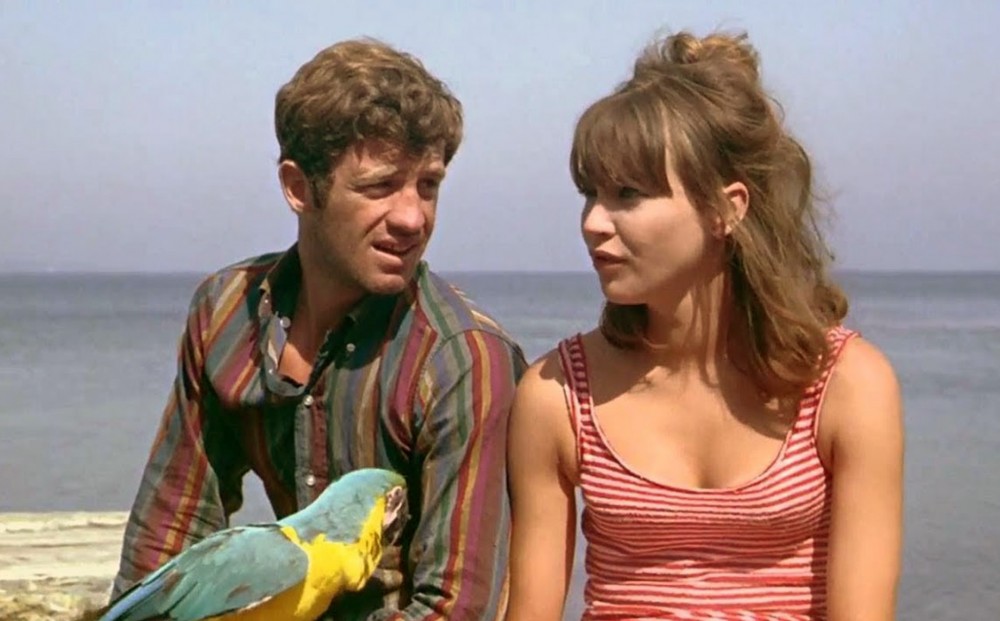Pierrot le Fou follows the story of Ferdinand Griffon, a disillusioned man trapped in a bourgeois life and an unhappy marriage. After quitting his job and attending a dull social gathering, Ferdinand reconnects with Marianne Renoir, his former lover, who is now involved with a group of criminals. Impulsively, he leaves everything behind — including his wife and children — and runs off with Marianne. Together, they embark on a chaotic and romantic journey across France, living off the grid and fleeing both the law and the criminal underworld.

As they travel, their relationship is intense but unstable. Ferdinand, who Marianne nicknames “Pierrot” (a name he resents), wants to escape society and find meaning through art, literature, and love. Marianne, on the other hand, is impulsive, playful, and less interested in Ferdinand’s philosophical musings. Their dynamic becomes more volatile as their personal desires begin to clash, reflecting the tension between romantic idealism and harsh reality.

Throughout the film, director Jean-Luc Godard breaks cinematic conventions with bold visual style, fragmented narrative, and frequent fourth-wall breaks. He uses jump cuts, surreal sequences, and vivid primary colors to capture the emotional instability and existential angst of the characters. The film serves as both a crime road movie and a self-aware commentary on politics, consumerism, and cinema itself — blending tragedy and absurdity in equal measure.

As the story progresses, Ferdinand becomes increasingly disillusioned, while Marianne’s ties to dangerous men put them in ever greater peril. Their dreamlike escape turns sour when betrayal enters the picture — Marianne reveals her involvement with another man, and Ferdinand’s romantic vision begins to collapse. Their love story, once full of passion and rebellion, spirals into paranoia and desperation.
In the end, Pierrot le Fou is a film about the limits of freedom, the fragility of love, and the search for identity. It captures the spirit of the French New Wave with its experimental form and philosophical undertones. Ferdinand’s tragic final act — wrapping his head in dynamite in a surreal suicide — serves as both a literal and symbolic explosion of his discontent. The film leaves viewers questioning the boundaries between fantasy and reality, freedom and chaos, and love and destruction.

